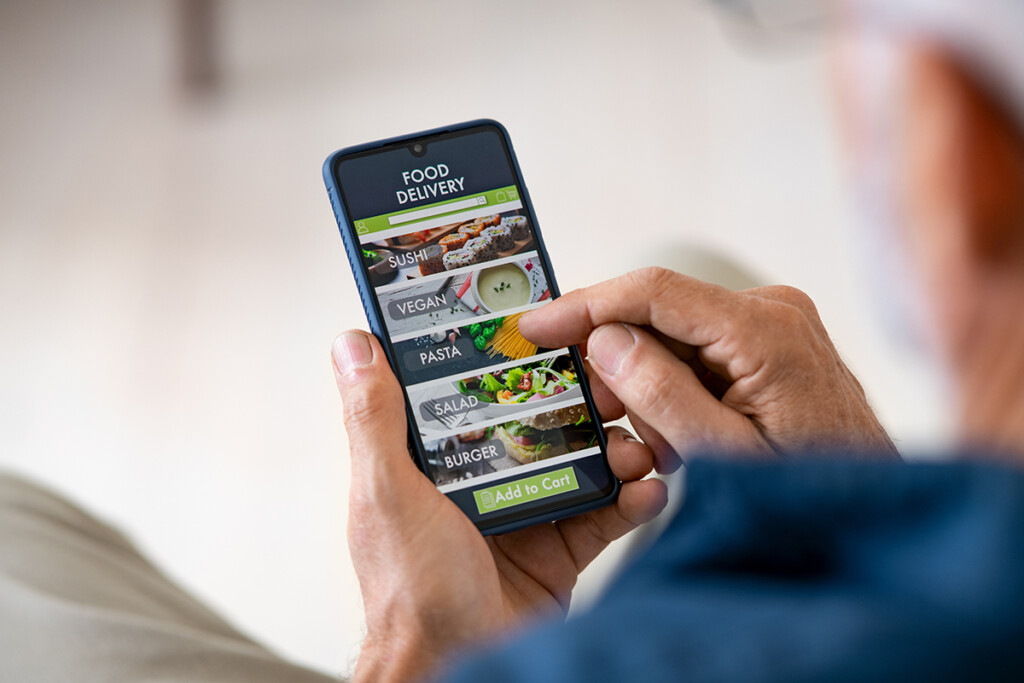SPONSORED CONTENT

Many foodservice operations watched online ordering grow their revenue during the past few years. However, during the pandemic, online ordering became one of the only ways diners could connect with eateries, at all. According to Datassential, 86% of consumers got food from an eatery by delivery, pickup, drive-thru or a meal kit in the last year. What’s more, the National Restaurant Association found that most diners indicated that they planned to keep up these behaviors into 2021, across nearly all locations and age groups.
In short, the digital restaurant marketplace has boomed. eMarketer notes that online orders more than doubled in 2020 and tallied up to nearly $50B worth of sales. But while the digital-foodservice environment has allowed many restaurants to stay afloat during the worst of the pandemic, the surge in online-based ordering is taxing for operations to predict, manage and monetize.
Let’s examine five strategic ways operators can learn from what’s been working with regard to managing online ordering and anticipate trends and techniques on the horizon.
Menu reboots
Operators know that some dishes don’t travel well. Anyone who’s ever ordered French fries for delivery will confirm. Chefs have focused on more forgiving dishes that can stand fluctuations in hold time and travel temperatures. Protein bowls and breakfast scrambles, soups and stews are popular picks for foods that travel well. While most restaurateurs are making these quality-focused choices, others are paring down online-ordering menus altogether. This means fewer ingredients to purchase, manage, prep — and waste. While paring down a menu might seem like a limitation, some operators have enjoyed success with this challenge and have developed brands-within-brands or themed menus.
Packaging and labeling
There are several reasons to step up packaging beyond the standard Styrofoam clamshell. Ingredients makers and packaging designers are now creating products specifically to help maintain food texture and temperature (finally, crispy French fries). More consumers prefer sustainable takeaway packaging, so be sure to look at the growing array of options that offer green label claims, such as compostables and alternative fibers. Also, consider ways to reassure pickup and delivery customers that their online order is safe, such as tamper- proof indicators and stickers. Lastly, more bars and restaurants are dabbling in their own packaged goods — from sauces to marinades, spice mixes and to-go cocktails — to increase margins and extend brands.
Kitchen equipment needs
When it comes to managing on-premise dining, as well as pick-up and delivery, you don’t want your kitchen staff to be tripping over each other. Invest in equipment that is versatile, has a smaller footprint and cuts down on heat (ventless fryers, induction ovens, etc.). Blast chillers can help you bring large quantities of fresh-prepped ingredients down to temperature fast for easy portioning, while combi-ovens offer pre-programmed settings and quick-cook options that allow staff to multi-task.
Traffic management for online dining
In foodservice, every station has a purpose. Today’s operators should consider adding a new dedicated station to manage, prepare and package online orders without disrupting the flow of the kitchen at large, or occupying too much dine-in real estate. This might mean a dedicated area with a tablet or display, to take care of the digital workflow required by apps, as well as packaging up orders accurately and securely. More substantial investments include prep tables, temperature-controlled storage centers for takeaway toppings or condiments, and compact coolers and heating units.
Front-of-house investments
Many operators have designated pick-up zones for online orders outfitted with warming trays and dedicated coolers. Look for appropriate spaces; for instance, refrigeration equipment is best located away from windows, doors and heat sources. Consider what space can be freed up in your physical location to deal with proper storage and organization of curbside or delivery orders, whether it’s under a bar or in a foyer. If your operation’s online business is particularly robust, consider adding full-size temperature-controlled cases that allow consumers and delivery drivers to easily grab orders and go. Some of these modern food lockers even feature locks and codes.
As the foodservice industry continues to develop E&S solutions to facilitate more seamless and satisfying pickup and delivery, it’s important to keep analyzing your operation. Consumer behavior has changed, and many think the significant embrace of the digital restaurant marketplace will remain. It’s time to figure out how your strategy can — and will — adapt, whether that’s through adding a few key pieces of equipment.
Explore the top foodservice equipment and supplies — so you know what’s really worth the investment — only at The NAFEM Show.
Register Now
RELATED CONTENT
- Advertisement -
- Advertisement -
- Advertisement -
- Advertisement -
TRENDING NOW
- Advertisement -
- Advertisement -


